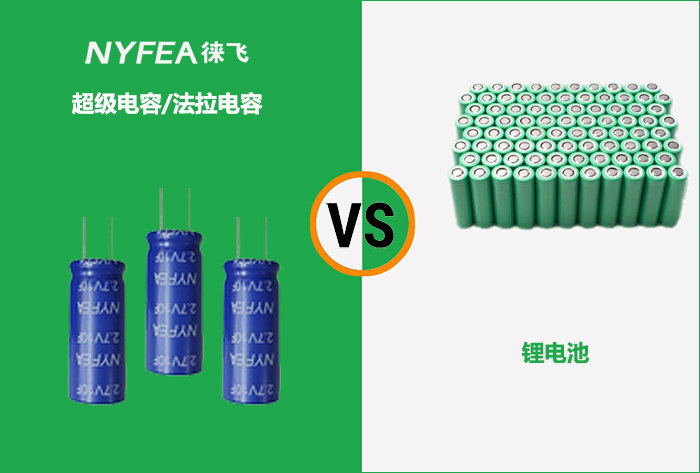Supercapacitors / Farad Capacitors vs. Lithium-ion Batteries: Differences and Comparison!
Farad Capacitors, also known as supercapacitors, represent a novel eco-friendly energy storage solution that bridges the gap between traditional capacitors and rechargeable batteries. With capacitance ratings ranging from 0.1F to >10,000F, they offer significant advantages over conventional capacitors: greater capacity, higher energy density, wider operating temperature range, and exceptionally long service life. Compared to batteries, they deliver higher specific power output and are environmentally non-polluting, making supercapacitors an efficient, practical, and green energy storage technology.

Farad capacitors possess significantly higher capacitance than conventional capacitors. Due to their substantial energy storage capacity, they exhibit external characteristics similar to batteries, hence the occasional designation as "capacitor batteries." As electric double-layer capacitors (EDLCs), they represent one of the highest-capacity mass-produced double-layer capacitor types worldwide. Their fundamental operating principle aligns with other EDLCs: utilizing a double-layer structure formed by porous activated carbon electrodes and electrolytes to achieve ultra-high capacitance.
Since their invention, supercapacitors have been consistently compared with traditional lithium-ion batteries. Given their outstanding advantages - including the ability to withstand approximately one million charge-discharge cycles and exceptionally long service life - from a developmental perspective, supercapacitors may gradually replace traditional lithium batteries in certain applications, representing an emerging trend.
Detailed comparison between Farad capacitors and traditional lithium batteries:
1. Operating Principle:
Supercapacitors and lithium batteries employ different energy storage mechanisms. Supercapacitors store energy through electric double-layer capacitance, while lithium batteries utilize electrochemical reactions for energy storage.
2. Power Density vs. Energy Density:
Regarding power density, supercapacitors can achieve over 7 kW/kg, whereas lithium batteries typically reach only about 1 kW/kg. In terms of energy density, traditional lithium batteries demonstrate a relatively wide range (100-300 Wh/kg), while supercapacitors offer substantially lower energy density.
3. Charge Storage Capacity:
Supercapacitors measure capacity in Farads (F), typically ranging from 1F to 10,000F. Traditional lithium batteries use milliamp-hours (mAh) as capacity units, generally spanning from 1 mAh to 100 Ah.
4. Charge/Discharge Duration:
Farad capacitors charge/discharge in milliseconds to seconds, while traditional lithium batteries require 1 to 10 hours. Supercapacitors can be charged to any potential within their rated voltage range and fully discharged without damage. Batteries operate within a narrower voltage window due to electrochemical limitations, and over-discharge may cause permanent damage.
5. Operating Temperature Range:
Farad capacitors function normally from -40°C to +85°C, while traditional lithium batteries operate only between -20°C and +60°C. Complete discharge at low temperatures can permanently damage lithium batteries.
6. Charging Methodology:
Farad capacitors charge by applying voltage across terminals (constant voltage), whereas traditional lithium batteries require controlled current and voltage charging protocols.
7. Operating Voltage Characteristics:
Farad capacitors: 2.3V to 3.0V (per cell). Traditional lithium batteries: 1.2V to 4.2V (per cell).
8. Service Life:
Farad capacitors endure over 1 million cycles, while traditional lithium batteries typically withstand fewer than 1,000 cycles. Supercapacitors significantly outperform lithium batteries in calendar life, generally exceeding ten years.
9. Environmental Impact:
Supercapacitors generate no pollution throughout their lifecycle - from manufacturing and use to disposal - making them an ideal eco-friendly power source. Lithium batteries contain non-decomposable materials that pose serious environmental contamination risks.
This comprehensive comparison between supercapacitors and traditional lithium batteries clearly demonstrates the advantages of supercapacitor technology. Both currently and prospectively, supercapacitors show extensive application potential across multiple industries including automotive, IoT, and power tools.

